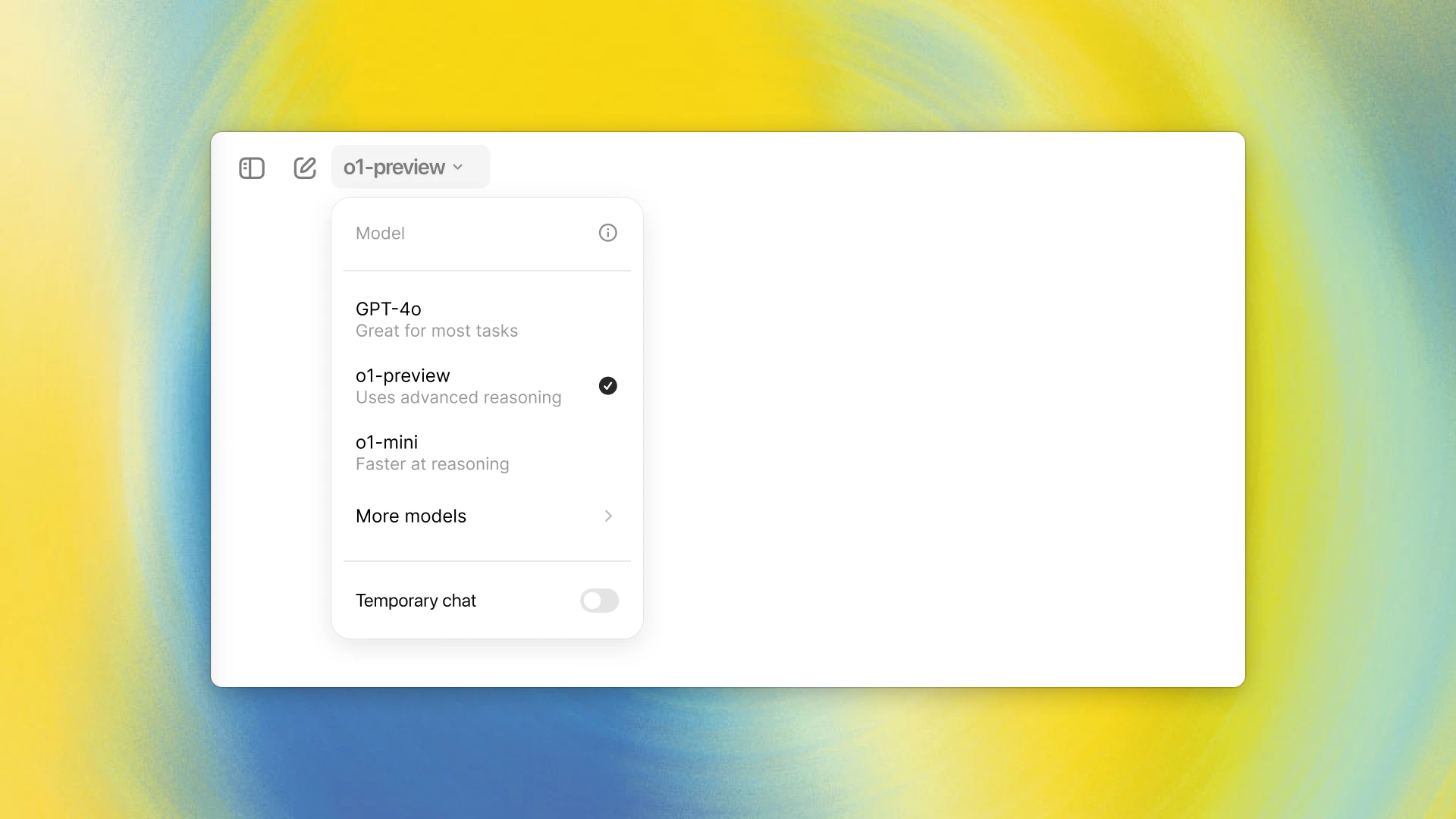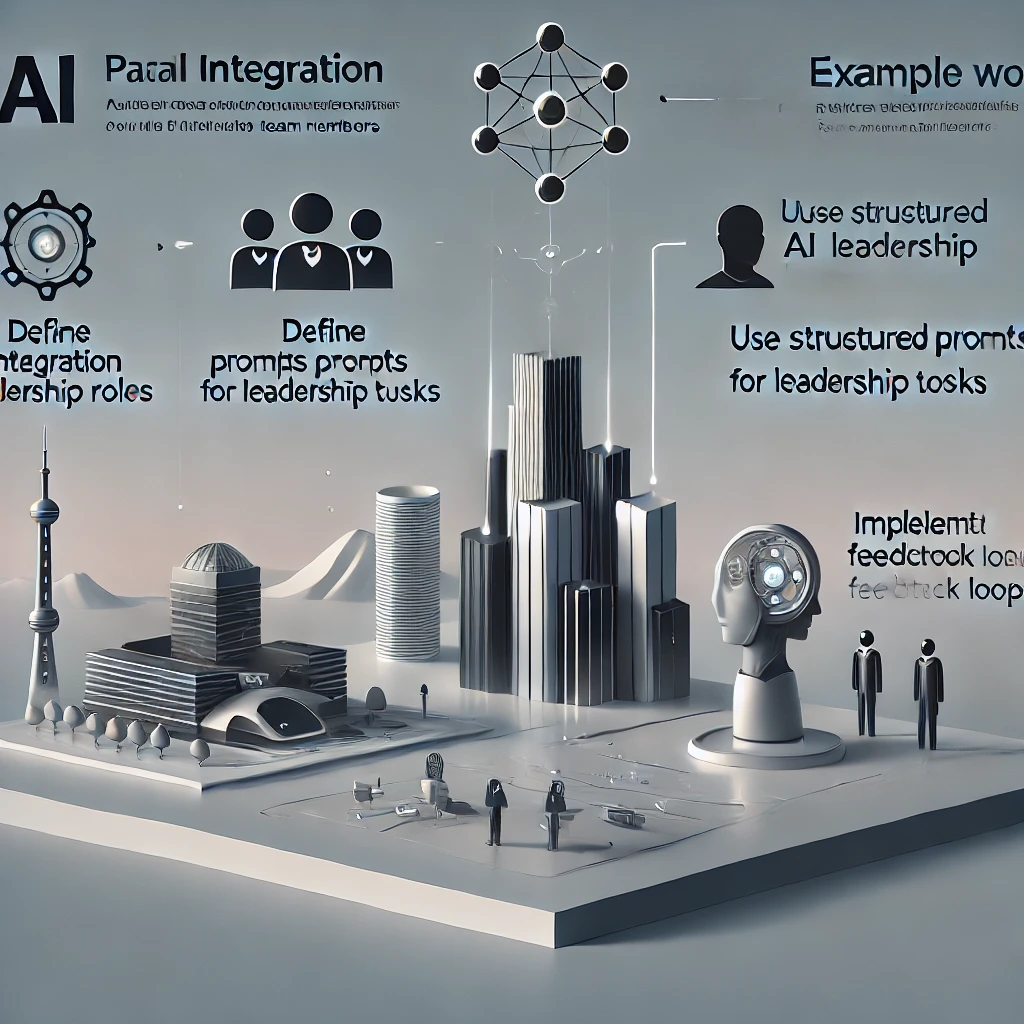AI Insights & Quick Answers
Deep dives, how-to guides, and rapid-fire solutions to level up your workflows
Elevate Your Business Game With Smarter No-Code Systems and AI Integration

Leveraging OpenAI o1-preview and o1-mini: A Developer’s Guide to Advanced AI Solutions
Introduction: Shifting the AI Mindset
Many teams still treat AI as a tool for automation, but what if we saw AI as a senior team member? This mindset shift hasn’t fully taken hold yet, with most organizations focusing on AI as merely a support role. By integrating AI as a “senior employee,” we can restructure our workflows, delegating complex problem-solving and leadership tasks to AI systems like OpenAI’s o1 models. This change in perspective could dramatically alter team collaboration dynamics, allowing AI to take on more than just routine tasks and step into roles involving strategic thinking and decision-making.
OpenAI’s latest o1 models—o1-preview and o1-mini—offer powerful solutions designed for complex reasoning and problem-solving, making them ideal for teams looking to elevate their use of AI from a mere tool to a key contributor. To fully understand how these models can be leveraged, check out OpenAI’s blog post on Introducing OpenAI o1-preview.

Understanding the o1 Model Family
To harness the full potential of these AI models, it’s essential to understand the unique strengths of both o1-preview and o1-mini.
o1-preview: Designed for in-depth problem-solving, this model excels in handling complex, multi-layered tasks that require thoughtful and logical steps. It’s your go-to for research, debugging, or any work that needs thorough analysis.
o1-mini: Built for speed, this model shines in environments where quick iterations and rapid responses are crucial. Perfect for coding tasks, o1-mini generates code snippets, handles repetitive tasks, and assists in agile development workflows.
When to Use Each Model
Choosing between these models should depend on the complexity and urgency of your tasks. Use o1-preview for intensive problem-solving that requires multiple steps, such as algorithm refinement, and o1-mini for quick, efficient solutions that allow you to maintain momentum during fast-paced development sprints.

Chain-of-Thought Reasoning: Treating AI as a Senior Employee
A defining feature of OpenAI's o1 models is chain-of-thought reasoning, which breaks down complex problems into smaller, manageable steps. This structured approach mirrors how a senior team member might approach a high-level challenge, making AI a reliable partner in decision-making rather than just a backend support system. To dive deeper into how LLMs like the o1 models learn to reason, check out OpenAI’s blog post on Learning to Reason with LLMs.
How Chain-of-Thought Works
Chain-of-thought reasoning allows the o1 models to:
Break Down Tasks: Similar to how a senior developer might deconstruct a project into smaller deliverables, o1 models can tackle complex issues in a step-by-step manner, ensuring each part of the problem is fully understood before moving to the next.
Multi-step Problem Solving: Particularly useful for recursive algorithms, strategic planning, and debugging, this reasoning enables more accurate and logical outputs.
Best Practices for Developers
Structured Prompting: To maximize the benefits of chain-of-thought reasoning, developers need to carefully structure their prompts. Break complex problems into sequential steps to allow the model to fully process each stage.
Delegating Leadership Tasks: Think of o1 models as project leads who manage specific aspects of a task, freeing up human team members to focus on creative or strategic roles.
Practical Applications for AI Developers and Tech Teams
Recasting AI as a senior team member opens up new possibilities for how tech teams can utilize these models, especially in coding and research contexts.
Coding Tasks
o1-preview for Logic-heavy Code: Delegating complex coding challenges such as recursion, algorithm design, or code optimization to o1-preview can lead to more thoughtful, well-structured solutions.
o1-mini for Quick Prototyping: In agile environments, o1-mini can quickly generate usable code snippets, making it a valuable tool for fast prototyping and iterations.
Research Assistance
The models also excel in research tasks, supporting tech teams with data analysis, hypothesis generation, and literature reviews.
o1-preview is especially useful for in-depth research tasks like extracting key insights from data sets or generating summaries from complex academic papers.
Real-world Example: Imagine having o1-preview help manage and analyze a vast research database, creating reports, summarizing key findings, and suggesting avenues for further investigation.
Insights from the OpenAI AMA: Enhancing Developer Workflows
During the recent OpenAI AMA, several key strategies emerged for integrating the o1 models into daily workflows, reinforcing the idea of AI as a leader rather than just a tool. Check out the Insights from the Recent AMA.
Workflow Optimization
Maximizing Speed and Depth: Tech teams can use o1-mini for quick daily tasks like bug fixes or performance testing, while o1-preview takes on more critical roles like roadmap planning or complex debugging.
Model Adaptation: Fine-tuning the models based on specific project needs can elevate their performance. This adaptability mirrors the role of a senior employee adjusting to different challenges.
Fine-tuning for Specialized Needs
By training the o1 models with domain-specific datasets, teams can ensure the AI provides expert-level insights in areas like healthcare, finance, or legal research. Fine-tuning allows AI to mimic the specialized knowledge a senior expert would bring to the table.
Steps to Integrate o1 Models as Senior Team Members
Practical Integration for Teams
Define AI Leadership Roles: Identify areas where AI can take on complex leadership tasks. For example, in large-scale projects, o1-preview could lead roadmap development while o1-mini handles daily task management.
Use Structured Prompts for Leadership Tasks: Give the models clear instructions, especially for high-level reasoning or decision-making. Structured prompts will yield more precise and valuable outputs.
Implement Feedback Loops: Treat the models like any senior team member by creating feedback mechanisms where outputs are evaluated and improved.
Example Workflow
In a project management platform:
o1-preview could oversee generating detailed project roadmaps, forecasting potential issues, and guiding long-term strategic decisions.
o1-mini might focus on day-to-day bug tracking, automating repetitive tasks, or providing quick updates for ongoing processes.

Best Practices for AI-Driven Problem Solving
Just like any senior team member, AI systems need to be optimized for their roles in problem-solving.
Optimize Model Usage
Clear Instructions: Provide well-structured instructions to enable the models to process complex tasks effectively.
Iterative Testing: Constantly refine the model’s outputs and adjust workflows based on its performance to get the best results.
Balancing Speed and Depth
Tech teams should use o1-mini for fast, agile projects, while relying on o1-preview for strategic initiatives requiring thorough reasoning and problem-solving.
By viewing AI as more than just a support tool, developers and tech teams can unlock the full potential of OpenAI’s o1-preview and o1-mini models. These models can step into roles traditionally held by senior team members, offering leadership in complex problem-solving and workflow management. With insights from the recent AMA and a shift in mindset, teams can fully leverage AI to transform their operations.
Check out the new models in ChatGPT! To fully understand how to integrate these advanced tools, visit OpenAI's blog post on Introducing OpenAI o1-preview and learn more about their reasoning capabilities in Learning to Reason with LLMs.

Most business owners are frustrated from wasting time and money. At Systems Shaper we turn your business into a selling machine. Clients who work with us attract more customers and build stronger brands.
Company
Services
Policies
Made With ❤️ By Systems Shaper
Systems Shaper Inc. © 2026. All rights reserved.
